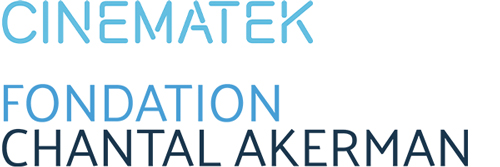Pera Film presents A Cinema of Artists, a program realised in collaboration with the Royal Film Archive of Belgium (CINEMATEK).
Located in Brussels, CINEMATEK holds one of the world's most significant and eclectic film collections, which is presented daily to audiences in its own theatre. In addition to preserving this cinematic heritage, the archive undertakes restoration work and focuses particularly on highlighting the richness of Belgian cinema.
For International Museum Day, CINEMATEK was invited by the Pera Museum to curate a program from its archival collectionthat enters into a profound dialogue with the themes and practices of Canadian artist Marcel Dzama. Each selected film engages with Dzama’s world in its own way, while also revealing the avant-garde, surreal, and interdisciplinary creative energy and artistic wealth that has shaped Belgian cinema since its earliest days.
Described by one of the founding figures of Belgian cinema, Henri Storck, as “a cinema of artists,” this tradition embraces a visionary, multidisciplinary, and avant-garde spirit—filmmakers who collaborated with artists and maintained an independent practice well into the 1960s due to the absence of a formal production and distribution infrastructure. With this program, CINEMATEK seeks to highlight this very uniqueness.
About the Curation
The first compilation of short films focuses on the works of Charles Dekeukeleire and Henri Storck, who in the late 1920s embraced cinema as a field of experimentation and sought a “pure cinema.” Alongside surrealist filmmaker Henri d’Ursel and writer Ernst Moerman, they form the first avant-garde generation of Belgian cinema. This selection will be presented with a live musical performance by contemporary musician Ekin Fil.
The second compilation opens with an example of the art documentary—a genre that holds a significant place in Belgian film history. This style gained a distinct identity through early documentary filmmakers such as Luc de Heusch, who believed that the depiction of art should itself be artistic. This section includes a portrait of Magritte at work, accompanied by two of his short films—tender, humorous pieces made behind the camera. The selection continues with an animated masterpiece by Raoul Servais and concludes with a cinematic poem by Edmond Bernhard, a poet, stylist, and self-taught filmmaker.
In the 1960s, Belgian cinema gained international recognition under the leadership of André Delvaux. His first feature film, The Man Who Had His Hair Cut Short, considered one of the founding works of modern Belgian cinema, blends reality and dream, memory and imagination, much like in Marcel Dzama’s practice.
The Great Barrier Reef, a 1969 underwater documentary, not only offers a visual experience parallel to Dzama’s environmental sensibility and colorful dreamlike universe, but also makes a deliberate surrealist reference to a photograph described by André Breton in his book L’Amour fou as “the bridge of treasures of the Australian Great Barrier.” Breton’s approach to drawing poetic meaning from chance encounters in nature resonates with Dzama’s practice of using nature as both an aesthetic and political narrative, establishing an intuitive kinship between the two artists.
The program concludes with what is perhaps the most poetic film by Chantal Akerman, one of the most important figures in Belgian and international cinema. Toute une nuit unfolds in the artist’s hometown over the course of a summer night, choreographing fleeting romantic encounters and separations. In doing so, it echoes Dzama’s recurring themes of night, music, and dance.
Film screenings within this program are accessible with a discounted museum entrance ticket. Tickets can be purchased from Biletix or the reception of Pera Museum. Per legal regulations, all screenings are restricted to persons over 18 years of age unless stated otherwise.

May 16
20:00 Short Film Selection – 1
May 17
15:00 The Great Barrier Reef
17:00 Toute une nuit
May 18
15:00 The Man Who Had His Hair Cut Short
May 28
19:00 Short Film Selection – 2
June 11
19:00 The Man Who Had His Hair Cut Short
June 13
19:00 Short Film Selection – 2
20:30 Toute une nuit
June 25
19:00 The Great Barrier Reef
May 16
20:00 Short Film Selection – 1
May 17
15:00 The Great Barrier Reef
17:00 Toute une nuit
May 18
15:00 The Man Who Had His Hair Cut Short
May 28
19:00 Short Film Selection – 2
June 11
19:00 The Man Who Had His Hair Cut Short
June 13
19:00 Short Film Selection – 2
20:30 Toute une nuit
June 25
19:00 The Great Barrier Reef
Pera Museum is pleased to present Marcel Dzama’s first solo exhibition in Turkey, surveying the artist’s unique approach and compelling storytelling. The exhibition curated by Alistair Hicks, emerging from the artist’s colourful imaginative world that is centred on music and dance, is made up of works that address the failures of governance we are currently subjected to, environmental destruction, and the calamities caused by war.

Tuesday - Saturday 10:00 - 19:00
Friday 10:00 - 22:00
Sunday 12:00 - 18:00
The museum is closed on Mondays.
On Wednesdays, the students can
visit the museum free of admission.
Full ticket: 300 TL
Discounted: 150 TL
Groups: 200 TL (minimum 10 people)